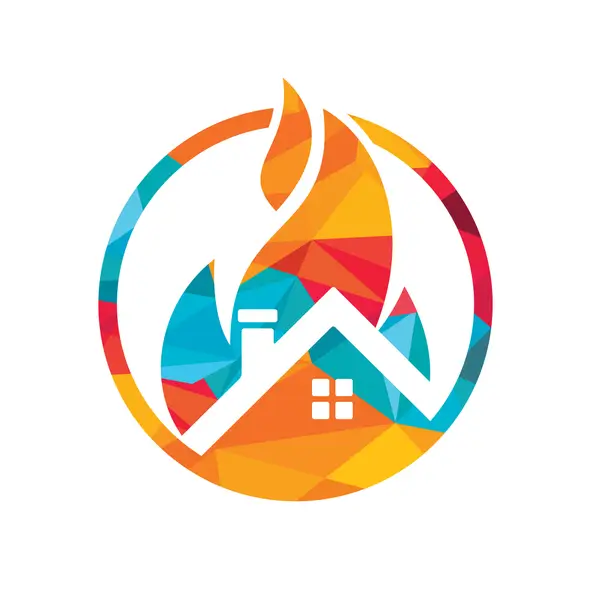Construction sites are inherently vulnerable to fire hazards. With temporary structures, flammable materials, incomplete electrical systems, and hot work such as welding, they present a unique combination of risks. Fires can cause catastrophic damage, threatening lives, delaying projects, and incurring huge financial losses. Preventing fire on construction sites requires a proactive, structured approach that integrates planning, equipment, training, and daily vigilance.
Key Statistics on Construction Fires

From 2016 to 2020, U.S. fire departments responded to an average of 11 construction site fires per day, causing about 5 civilian deaths, 62 injuries, and $376 million in losses each year.
Source: NFPA

In 2021–2022, there were 350 fire/explosion events on construction sites in the U.S. alone. 160 of these involved ignition of clothing, vapors, or gases.
Source: U.S. Bureau of Labor Statistics

1. Conduct a Pre-Construction Risk Assessment
The first step in preventing fires is conducting a detailed risk assessment before construction begins. This assessment should identify flammable materials, possible ignition sources, and high-risk activities such as welding or cutting. Planners should consider the placement of temporary structures, access routes for emergency services, and the location of storage areas for fuel and chemicals. Proactive planning allows the implementation of control measures before work begins.
2. Control Hot Work Activities
Hot work—including welding, soldering, and cutting—is a leading cause of construction fires. To mitigate the risks:

Implement a hot work permit system. Workers must be authorized and trained before engaging in any task that involves heat or sparks.

Designate fire watches during and for at least 30 minutes after the work is completed.

Remove all flammable materials within a 35-foot radius of the hot work area, or use fire-resistant blankets and shields.

Ensure fire extinguishers are easily accessible and workers know how to use them.
3. Handle and Store Flammable Materials Safely
Construction sites often involve the use of flammable gases, fuels, and solvents. To minimize fire risk:

Store flammable liquids in approved containers and cabinets, per OSHA standard 1926.152.

Designate specific zones for the use and storage of combustible materials, away from hot work and ignition sources.

Use spill containment measures such as drip trays and train workers on how to respond to leaks or spills.

Never store fuel near exits, stairways, or areas where it can block escape routes.
4. Maintain Electrical Safety
Improper use of electrical systems is another common cause of fires. Temporary power setups should be installed and regularly inspected by licensed electricians.

Use weatherproof and heavy-duty cables suitable for the site’s conditions.

Inspect cords and plugs regularly for signs of damage or wear.

Avoid overloading circuits or daisy-chaining extension cords.

Equip circuits with Ground Fault Circuit Interrupters (GFCIs) to prevent electrical fires caused by shorts or overloads.
5. Provide Adequate Fire Protection Equipment
Every construction site must have adequate fire suppression equipment. This includes:

Portable fire extinguishers, rated for Class A, B, and C fires, are placed strategically across the site.

Marked and accessible fire exits and evacuation routes.

Fire hoses and standpipes where water sources are available.

Consider installing temporary sprinkler systems, especially in multi-story buildings.
Ensure that equipment is inspected regularly and workers are trained on how to use it properly.
6. Implement Effective Housekeeping Practices
Good housekeeping significantly reduces the risk of fire. Poorly maintained sites with piles of debris or improperly stored materials are far more likely to experience a fire.

Clean the site daily, removing combustible materials like cardboard, wood scraps, and packaging.

Store waste in metal containers with lids, and remove it regularly.

Separate and label areas for hazardous materials to avoid chemical reactions or spontaneous combustion.

Keep walkways, staircases, and exits clear at all times.
7. Train Workers on Fire Safety
All workers should receive training on fire prevention and response.

Conduct fire safety orientation for new workers and regular refreshers for existing staff.

Train workers on how to use fire extinguishers and how to respond in case of a fire.

Run fire drills regularly so that everyone knows the evacuation plan and assembly points.

Make fire safety part of daily toolbox talks to reinforce awareness.
8. Install Detection and Alarm Systems
Even on temporary sites, fire detection and alarm systems can save lives and property.

Install smoke detectors in high-risk areas like tool storage rooms or hot work zones.

Use audible and visible alarms to alert workers in case of an emergency.

Where appropriate, install heat sensors and fire panels that can notify emergency services directly.

Consider 24/7 site monitoring or security personnel during off-hours to spot fire risks early.
9. Coordinate with Local Fire Services
Before construction begins, engage with the local fire department to review emergency access routes, hydrant locations, and water pressure requirements.

Provide fire services with updated site plans and access instructions.

Invite them to tour the site and offer suggestions for improving fire response preparedness.

Work together to conduct joint drills, especially in complex or high-rise projects.
10. Design Fire Safety into the Construction Process
Preventing fires doesn’t start once construction begins—it starts at the design phase.

Choose fire-resistant materials where possible.

Plan for early installation of permanent fire suppression systems.

Avoid excessive use of flammable construction materials.

Keep temporary heating equipment and fuel sources well away from flammable structures.
11. Secure the Site from Arson
Arson is a major concern on construction sites, especially during off-hours.

Install perimeter fencing and lock all gates.

Use lighting and motion-sensor systems to deter intruders.

Consider on-site security personnel or remote video surveillance.

Secure flammable materials and tools when not in use.
12. Respond Quickly to Incidents and Review Regularly
In the event of a fire:

Evacuate immediately using the designated routes.

Call emergency services and notify the site supervisor.

Use extinguishers only if it is safe to do so.

After the incident, conduct a thorough review to identify causes and improve protocols.

Maintain clear records of all inspections, training sessions, and safety measures taken.
Final Thoughts
Fires on construction sites are preventable with the right approach. By combining proper planning, consistent training, regular inspections, and collaborative coordination with local emergency services, companies can dramatically reduce fire risks. Fire safety should be a constant priority throughout every phase of construction—from design to project completion.
A safe construction site is a productive one. Don’t wait for a fire to remind you of the importance of prevention.






